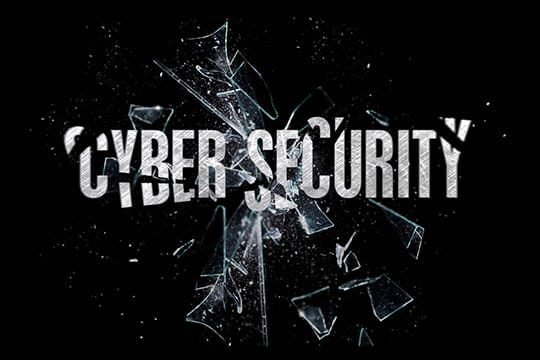The digital world is evolving at a high pace and with its development, cyber risk management is becoming more challenging. Since modern businesses can hardly stay away from technologies, cybersecurity has become one of their main concerns.
To protect the company from cyber threats, experts recommend using a systematic approach that would cover each ongoing process and each used tech product. It is advisable to examine and analyze each component of the company’s IT infrastructure. Highly useful is software composition analysis that gives a clear vision of what open source components are being brought into the company’s usage.
On the whole, while managing cyber risks both internal and external environments should be carefully observed and that is what brings up the usefulness of C-SCRM.
What is C-SCRM?

C-SCRM or cyber supply chain risk management is aimed to identify and soften the impact of the risks and problems that can be associated with the IT/OT (information and performance technology) products and services supply chains.
C-SCRM covers the lifecycle of the system from its development through maintenance to destruction. The reason for such wholesome coverage is obvious; threats and risks can appear at any stage of the system’s lifecycle; it is crucial to identify them on time.
Risks for the cyberspace users increase simultaneously with the increase of risks of compromising the supply chain. Intentionally or not, but organizations tend to use low-cost products or products that poorly interoperate. Such an attitude to the formation of a supply chain may have a huge impact on the supply chain ecosystem and, thus, the security of the company.
Recommended for you: Cybersecurity Risk Assessment & Management Tips for Small Businesses.
The Keypoints of C-SCRM

Here are some key points to better understand how C-SCRM works and what are the main principles of this process:
- C-SCRM would be unique for each company and it would be tightly attached to operational work. C-SRM is built on supply chain risk management practices and the cybersecurity policy of the company.
- C-SCRM should be naturally integrated into the overall risk management processes ongoing in the company.
- C-SCRM should cover each process and component of the business.
- For effective C-SCRM it is better to have a special software security group that would work full-time.
- It is also advisable to have documented all the work concerning software vulnerabilities identification and analysis, security risks, and measures taken.
Some experts also claim that the best results are achieved when software security management is assessed and analyzed by third parties at least once in a while. This way the assessment could be more objective and professional.
Why You Should Take Control Over the Supply Chain?

The supply chain of a company may have diverse products; the security of the chain depends on whether vendors properly tested their products. Ideally, any product that enters the market should be carefully tested. However, sometimes it is extremely tough.
The problem of testing products comes from the fact that producers may get some components of hardware and software from the outside and, therefore, cannot always guarantee the quality of those components and the safety of using them.
In this case, when getting products from vendors companies cannot be sure that their supply chain is secure. That also includes cyber risks that may come with the unknown or poorly checked software.
For example, a company producing laptops in the middle price segment may prefer to use some components from vendors with low prices and this could be anything: wires, software components, chips, and so on.
In such a case, the laptop producers cannot personally control the whole process of manufacturing the product at all stages. And when buying laptops from this manufacture, you get some risks together with the product you buy. Because you have no guarantees that the producers of some of the components did not make any sort of an application that can be destructive or intended to steal personal data. C-SCRM is aimed to identify the risks of that kind.
Also, some services that are outsourced may involve the usage of some commercial or confidential information, thus, when entrusting it to vendors, company risks to get this information stolen. So, it all does not stop with the hardware and software; the risks may come from services that are involved in a supply chain. And C-SCRM is aimed to address those as well.
The Definition of C-SCRM is Clear. But How to Run Cyber Risk Management?

In the best-case scenario, managing risks coming from the digital ecosystem should be done by specialized experts who have undergone learning and have certain practices in cyber risk management. However, it is generally known that any sort of effective management starts with the assessment of current the situation and state of things. So, let’s have a look at cyber risk assessment first.
You may like: Privacy, Security & Health Risks of Social Media & How to Prevent Those.
Cyber Risk Assessment
 Cyber risk assessment covers identification and detailed analysis of risks. This sort of analysis should be run systematically and accurately. Make sure that the whole IT ecosystem of the company is carefully observed.
Cyber risk assessment covers identification and detailed analysis of risks. This sort of analysis should be run systematically and accurately. Make sure that the whole IT ecosystem of the company is carefully observed.
The risks may come from people and technologies, from inner vulnerabilities of IT infrastructure and from cyber attacks from the outside.
Businesses tend to focus on the risks that are most likely to occur. Such an approach can be justified. However, companies should be careful with excluding from management risks that seem to be less likely to occur. Such a decision should be taken after decent expert analysis.
Cyber Risk Management
 After risk assessment and analysis usually, the strategy is built. This strategy determines methods of preventing the risks and tools that could potentially be used in case risks arrive. The strategy then turns into a more detailed set of measures that the company may use to manage cyber risks. The measures should be regularly assessed in terms of their effectiveness and corrected if needed to make sure that they adequately respond to the circumstances.
After risk assessment and analysis usually, the strategy is built. This strategy determines methods of preventing the risks and tools that could potentially be used in case risks arrive. The strategy then turns into a more detailed set of measures that the company may use to manage cyber risks. The measures should be regularly assessed in terms of their effectiveness and corrected if needed to make sure that they adequately respond to the circumstances.
Meanwhile, it is important to inform and instruct IT users so that they know what role they may play in the whole process of cyber risk management. Cybersecurity is not a sort of issue that should be managed solely by executives. All those who use IT infrastructure should clearly understand what cyber threats mean and where they may hide. Better, if they also know what steps can be taken to prevent the risks and what to do in case risk situation does happen.
Essentials and Tips

There are some essential components of cyber risk management as of the process:
- Firstly, cyber risk management should be aligned to business goals so that is a natural part of all of the business processes of any kind;
- Then risks are identified and assessed;
- Then companies usually try to plan responses to potential risks;
- And finally, risks should be monitored and all the work that is done on managing them should be reported and continuously analyzed.
Those steps are easy to list like that, but in fact, each step requires tremendous professional work and specialized knowledge and skills.
Cyber risk management is more like an art and in each company, this process would flow in its own way. For each company, the set of measures and tools would be completely unique. However, there are some tips that are comparatively universal:
- Cybersecurity should be a concern not only of the executives but of each user of the IT infrastructure, so it is advisable to build a “security-focused culture” that would be a natural part of the overall business culture.
- Employees should be not only aware of the cyber threats “that surround everyone everywhere”, but they should know what risks are most relevant to the company and what measures can they take to be a part of the risk management process.
- Maintaining resilience is important since companies are never 100% bulletproof and some sort of risk events may happen. In the best-case scenario, when some destructive events happen, the company should still be able to run critical missions and keep on functioning during the recovery period.
Coming to C-SRM, here are some practice-based tips on how to manage the supply chain security:
- Highly useful could be integration supplier risk management program, to find out more read about VRM programs ( such programs help to better understand vendors);
- When signing contracts with vendors pay attention to the details concerning cybersecurity obligations that suppliers should have;
- Classify vendors based on their accessibility to sensitive data and confidential information;
- Consider using some of the specialized tools like “Veracode” (this tool is used to assess the security of all of the applications that are developed or provided by third pirates you are bringing into the project), “Safe code” (this tool is used to ensure the security of the software development process) or OTTF (Open Group Trusted Technology Forum).
You may also like: VoIP Vulnerability & Security Risks: All You Need to Know.
To Sum Up

Cyber risks await any company that is anyhow connected with the digital world. So there is hardly anyone escaping this sort of risk in today’s world for many of the businesses use digital networks and technologies.
Business owners more and more realize that cyber risk management should be a systematic and expert-guided process and that precautions, like C-SCRM, are almost essential for survival.






